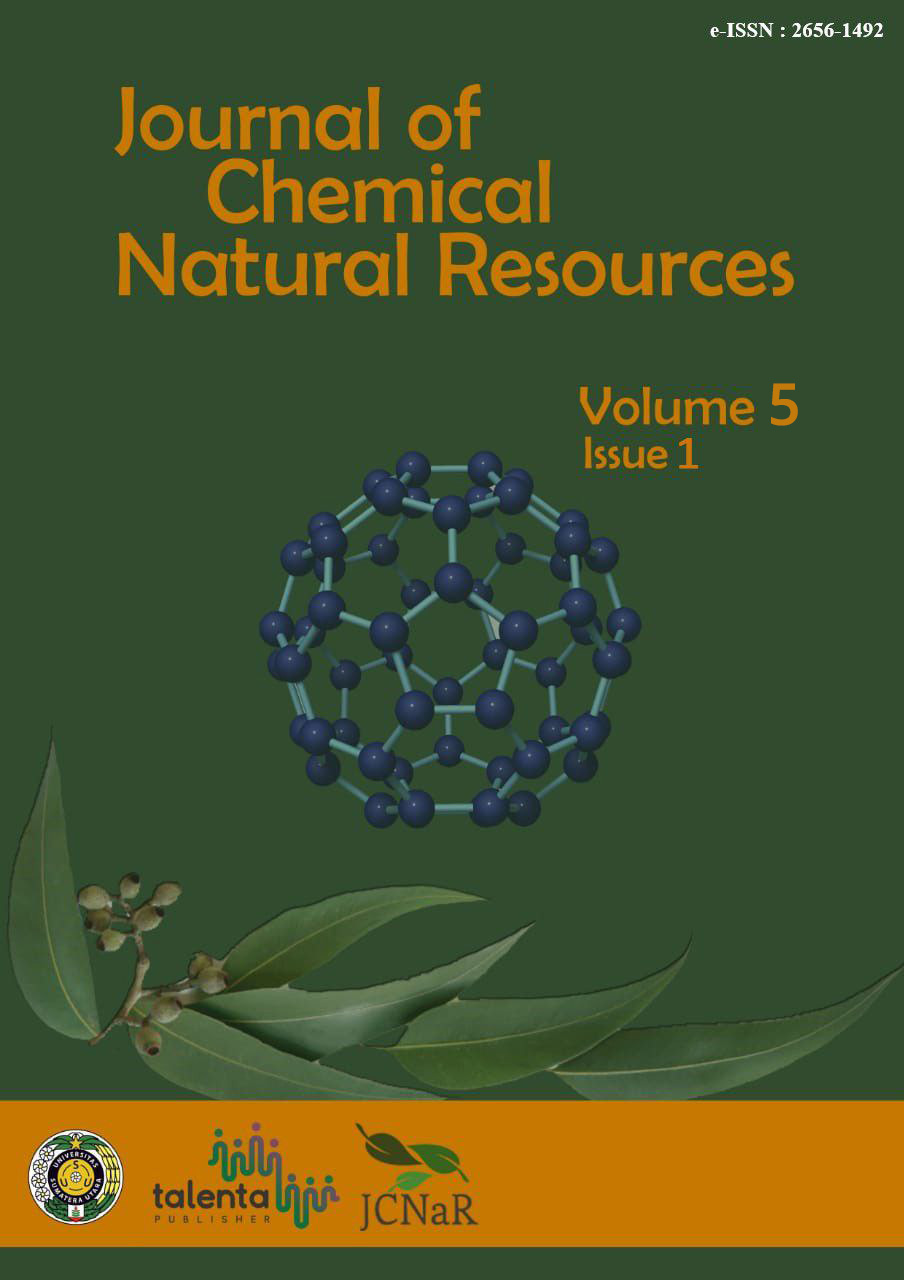Synthesis of Cellulose Ether from Alkoxylyted Epoxide Methyl Esters Fatty Acids Rubber Seed Oil with Cellulose
DOI:
https://doi.org/10.32734/jcnar.v5i1.11987Keywords:
Alkoxylation, Epoxidation, Rubber Seed OilAbstract
The alkoxylation reaction was carried out between the fatty acid methyl ester epoxide of rubber seed oil (RSO) and cellulose to produce cellulose ether. RSO was obtained from rubber seed by extraction method with n-hexane solvent followed by a purification process including a degumming stage, bleaching and neutralization. The RSO obtained was further dimetanolized with a NaOH catalyst producing a fatty acid methyl ester which is then epoxidized with a performance acid to give the epoxide compound. The resulting epoxide compound was reacted with cellulose in an isopropanol solvent, producing ether cellulose. RSO obtained as much as 46.75% with a free fatty acid content of 0,2184%, iodine amount, and unsaturated fatty acid content of 82,4%. The resulting ether cellulose was found to be vibrations in the area waves number of (ῡ) = 1118 cm-1, which indicates the presence of C-O-C bonds from the ether, which can indicate that an etherification reaction has occurred in cellulose. This is also supported by the presence of vibrations at wave numbers (ῡ) = 1743 cm-1, (ῡ) = 1165 cm-1, (ῡ) = 1118 cm-1, (ῡ) = 725 cm-1, each of which shows the existence of a bond (C = O) from the ester, CH3 bond, C – O bond from the ester and bond to carbon (CH2) n where n ≥ 4, which is not found in cellulose but is found in cellulose ether. It shows that an alkoxylation epoxide reaction of MEAL rubber seed oil with cellulose has occurred, which will produce cellulose ether.
Downloads
References
Alessandro G and Mohamed NB, 2008. State-of-the-art in Monomers, Polymers and Composites from Renewable Resources. Edited by Mohamed NB and Alessandro Elsevier, Amsterdam.
Granstrom M, 2009. Cellulose Derivate: Synthesis, Properties and Applications. Helsinki University. Publishing House. Helsinki
Umemoto T, Ogita N, Noishiki Y, Nagatani H and Banzashi G, 2013. Cellulose Fibers and Process for Producing the same, CelluloseFiber Assembly and Cellulose - FiberComposite Material. US Patent US 20130338250A
Kumar AP dan Singh RP, 2008. Biocomposites of Cellulose Reinforced Starch: Improvement of Properties by Photo–Induced Crosslinking. Elsevier Bioresource Technology
Nurman S, Marlina, Saiful, 2016. Polyurethane Membrane from Rubber Seed Oil (Rubber Seed Oil) From Rubber Seed Oil With Hexamethylene – 1,6 Diisocyanate. Natural Journal. Vol. 16, No. 1, 2016.
Purba, N. 2011. Analysis of Free Fatty Acids (ALB) from CPO Fresh, CPO Outspec, and CPO Blending at PTPN III Trade PKS Sei Mangkei. FMIPA. [Thesis]. Medan. University of Northern Sumatra
Wen X, Wang H, Wang X, Liu C, 2017. Preparation and Characterization of Cellulose Laurate Ester by Catalyzed Transesterification. Elsevier. Carbohy thread polymers. 168 (2017). 247–254.
Chen X, Zheng N, Wang Q, Liu L, Men F, 2107. Side-Chain Crystallization in Alkyl Substitute Cellulose Esters and Hydroxy propyl Cellulose Esters. Changchun Institute of China

Downloads
Published
Issue
Section
License
Copyright (c) 2023 Journal of Chemical Natural Resources

This work is licensed under a Creative Commons Attribution-ShareAlike 4.0 International License.














